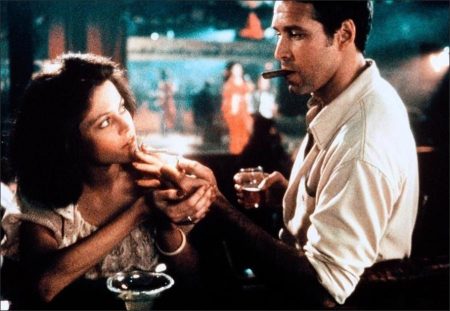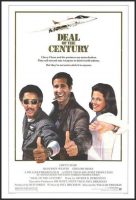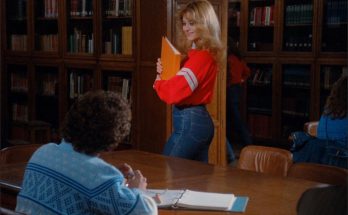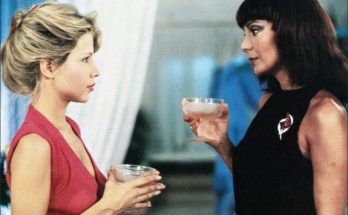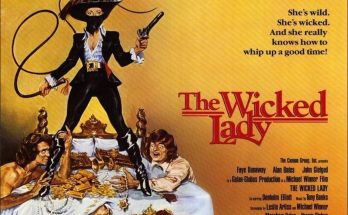Deal of the Century movie storyline. Arms dealers from several companies vie to sell the most expensive and highest tech weapons to a South American dictator. There are complications; understanding the exact nature of how ‘gifts’ are used to grease the wheels of a sale, a religious conversion from one of the salesman and a romance that begins to grow between two competitors, not to mention the imminient financial collapse of one of the companies if they don’t make this sale.
Deal of the Century is a 1983 American comedy film directed by William Friedkin and starring Chevy Chase, Gregory Hines, and Sigourney Weaver. The film follows the adventures of several arms dealers that compete to sell weapons to a South American dictator.
About the Story
Eddie Muntz (Chevy Chase) is a small-time American arms dealer who talks his way into a job with a large defense corporation selling high-tech military unmanned aerial vehicles to a South American dictator (William Marquez). Muntz arrives in war-torn and impoverished “San Miguel” to sell weapons to both its leader and the rebels seeking his ouster.
In the middle of a sales pitch to the rebels, Muntz is caught in a firefight and is shot in the foot. Hobbling in a rundown hotel days later, Muntz meets Harold DeVoto (Wallace Shawn), a sales rep for the American defense contractor, Luckup.
Muntz peddles small arms (assault rifles, anti-personnel mines, and machine-pistols disguised as cassette tape players), whereas Luckup’s product is more sophisticated—the Peacemaker UAV, a military dream that operates without pilots or airbases. But the military junta of San Miguel strings DeVoto along, driving the man to suicide. Muntz successfully takes over the deal and wins a contract worth millions.
On returning to America, he is angrily confronted at gunpoint by Catherine (Sigourney Weaver), Harold’s widow. Demanding the contract, Catherine shoots Muntz instead, reopening the wound on his foot. Waking up in the hospital, Muntz is told by Frank Stryker (Vince Edwards), a Luckup executive, that San Miguel reneged on the deal after a distastrous and highly publicized demonstration of the Peacemaker.
Muntz nevertheless decides to help Luckup re-sign San Miguel. He is joined by his partner, Ray Kasternak (Gregory Hines), an ex-fighter pilot now undergoing a religious crisis of conscience, and also by Catherine. Muntz’s efforts are complicated by tensions with Luckup, Ray’s religious conversion, “The Peacemaker’s” many technical glitches, and his own growing moral reservations.
On the eve of a major defense industry exposition, Muntz is visited by Massagi (Richard Libertini), an immensely wealthy arms merchant who both encourages him to finalize the San Miguel deal and coaches him on how to do it. Massagi reveals that the global arms industry has a stake in sales of weapons like the Peacemaker because they allow for localized and conventional wars that will keep their business viable into the next century. Massagi also explains how recent changes to federal law not only legalize bribes to foreign dictators, but make those bribes tax deductible. These revelations spur Muntz on, while also adding to his unease.
Muntz accompanies San Miguel’s dictator to the weapons expo, where billions of dollars of high technology are displayed and demonstrated. To the dictators, Muntz disparages any warplanes he sees, reminding them of the obvious benefits of pilot-less aircraft.
While Muntz demonstrates some of his own wares (including a booby-trapped urinal), Ray hijacks one of the fighter jets being demonstrated, threatening to attack the expo, also daring them to attack him. Ray circles overhead as representatives for defense contractors bicker among themselves as to whose weapons are good enough to shoot him down.
Deal of the Century (1983)
Directed by: William Friedkin
Starring: Chevy Chase, Sigourney Weaver, Gregory Hines, Vince Edwards, William Marquez, Eduardo Ricard, Carmen Cristina Moreno, Richard Herd
Screenplay by: Paul Brickman
Production Design by: Bill Malley
Cinematography by: Richard H. Kline
Film Editing by: Jere Huggins, Ned Humphreys, Bud S. Smith
Costume Design by: Rita Riggs
Set Decoration by: Richard C. Goddard
Music by: Arthur B. Rubinstein
Distributed by: Warner Bros. Pictures
Release Date: November 4, 1983
Views: 154
